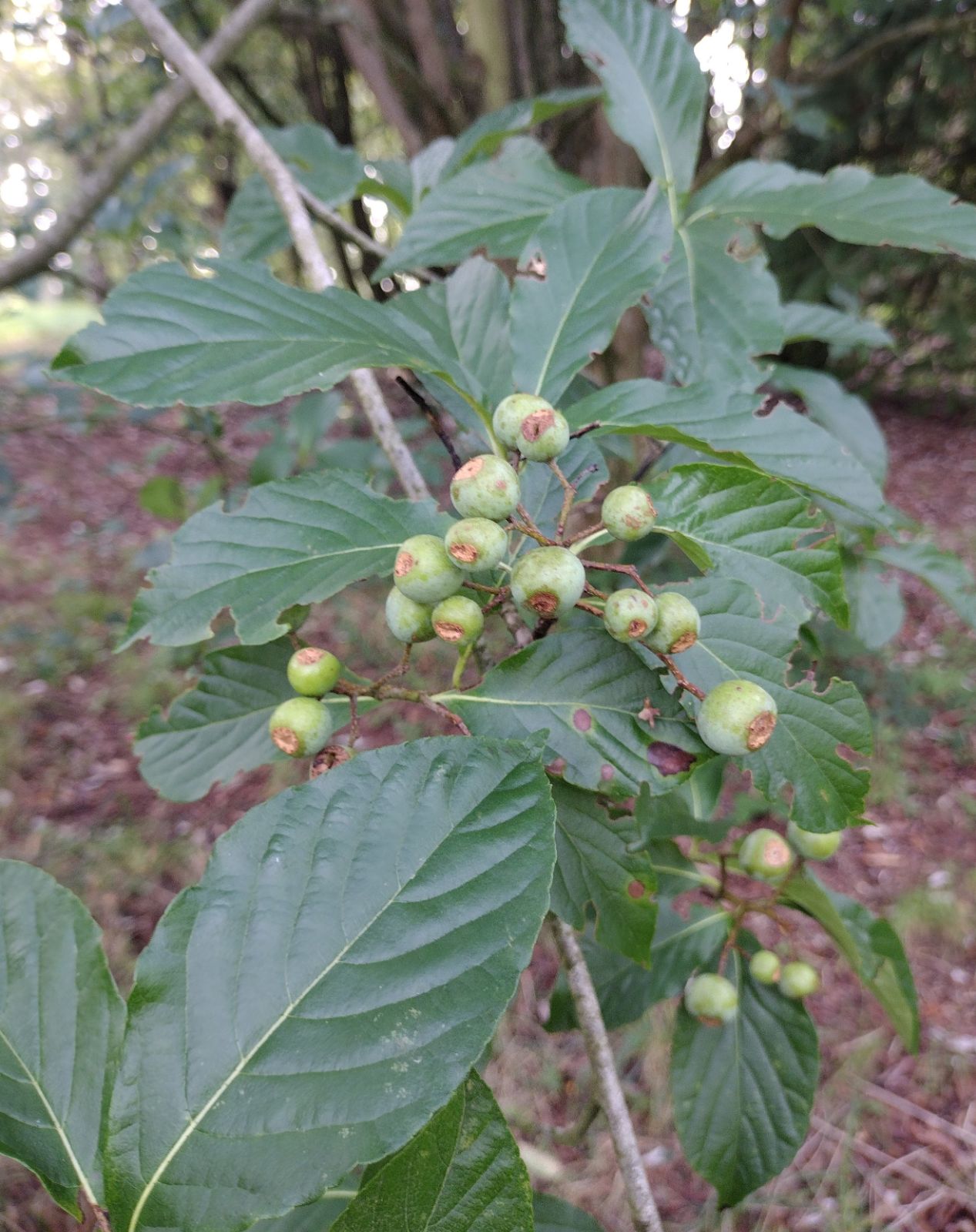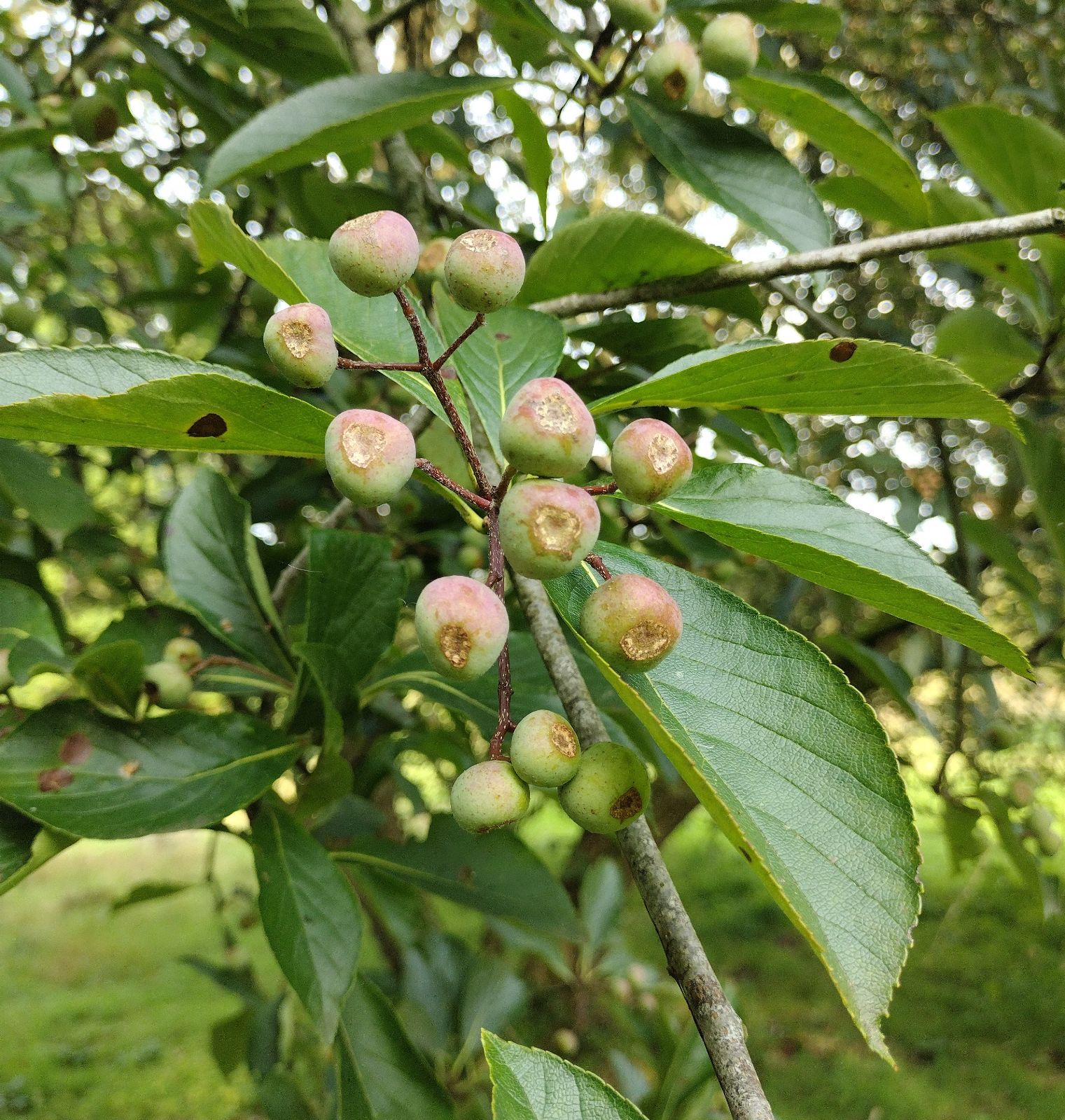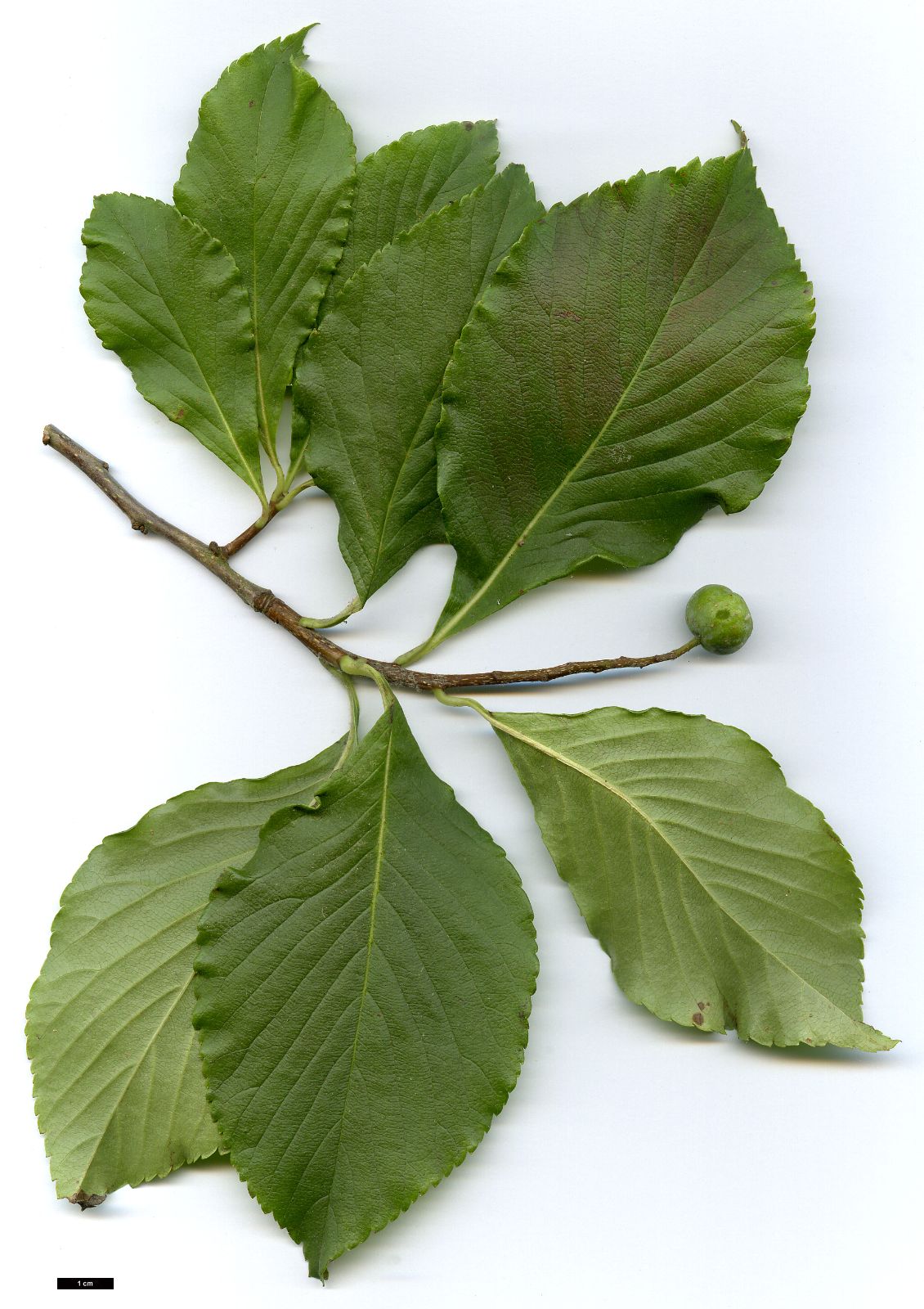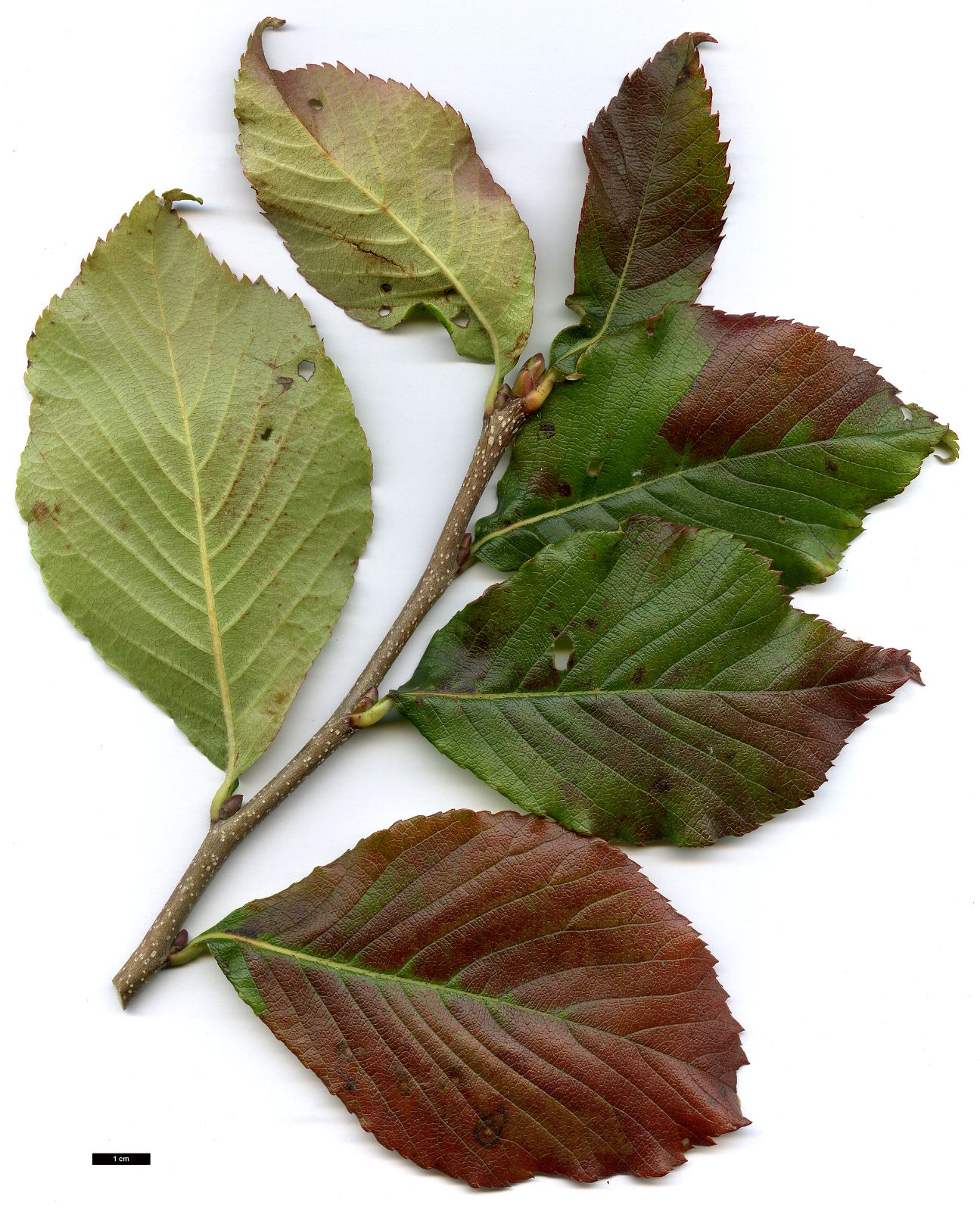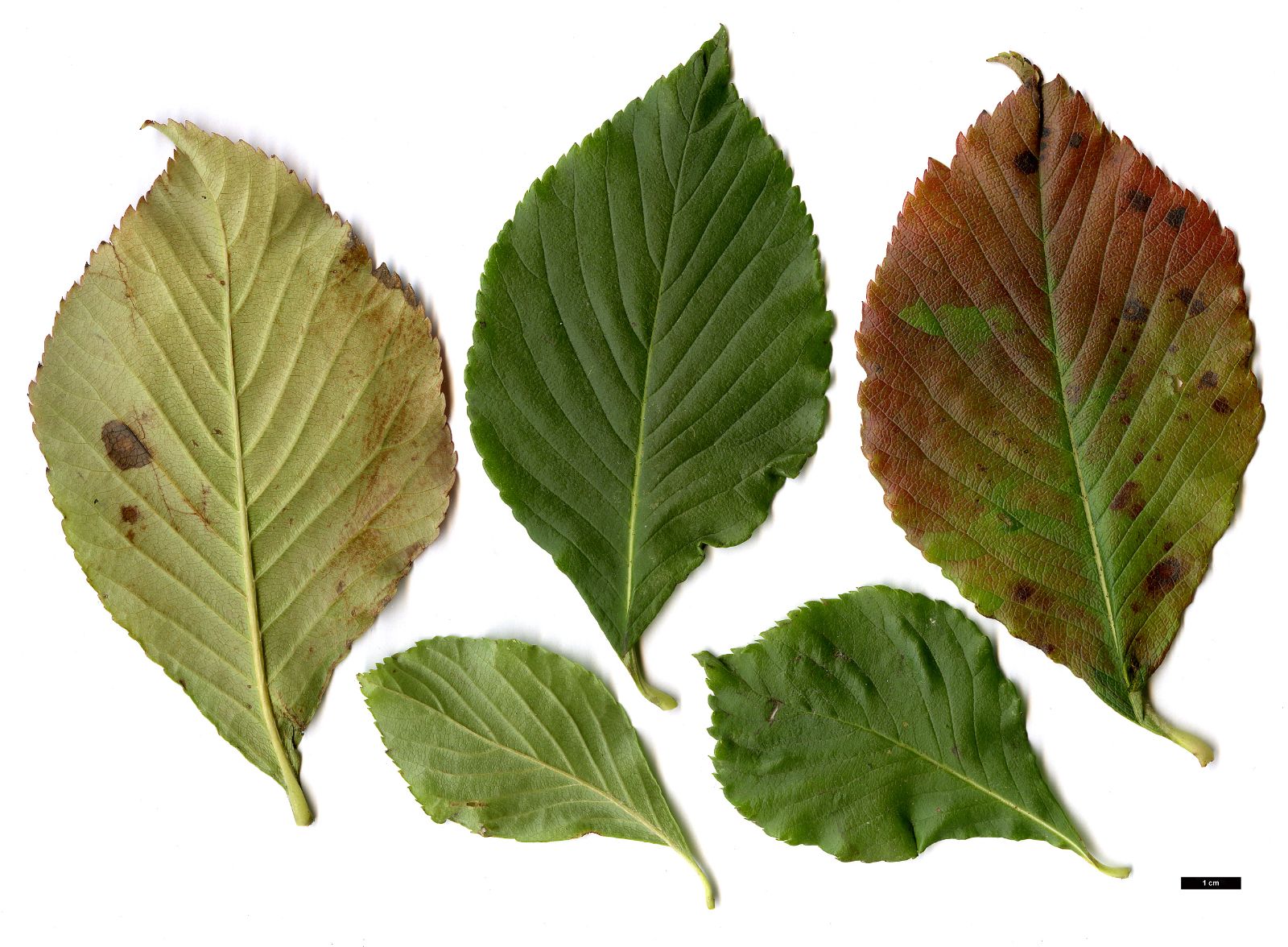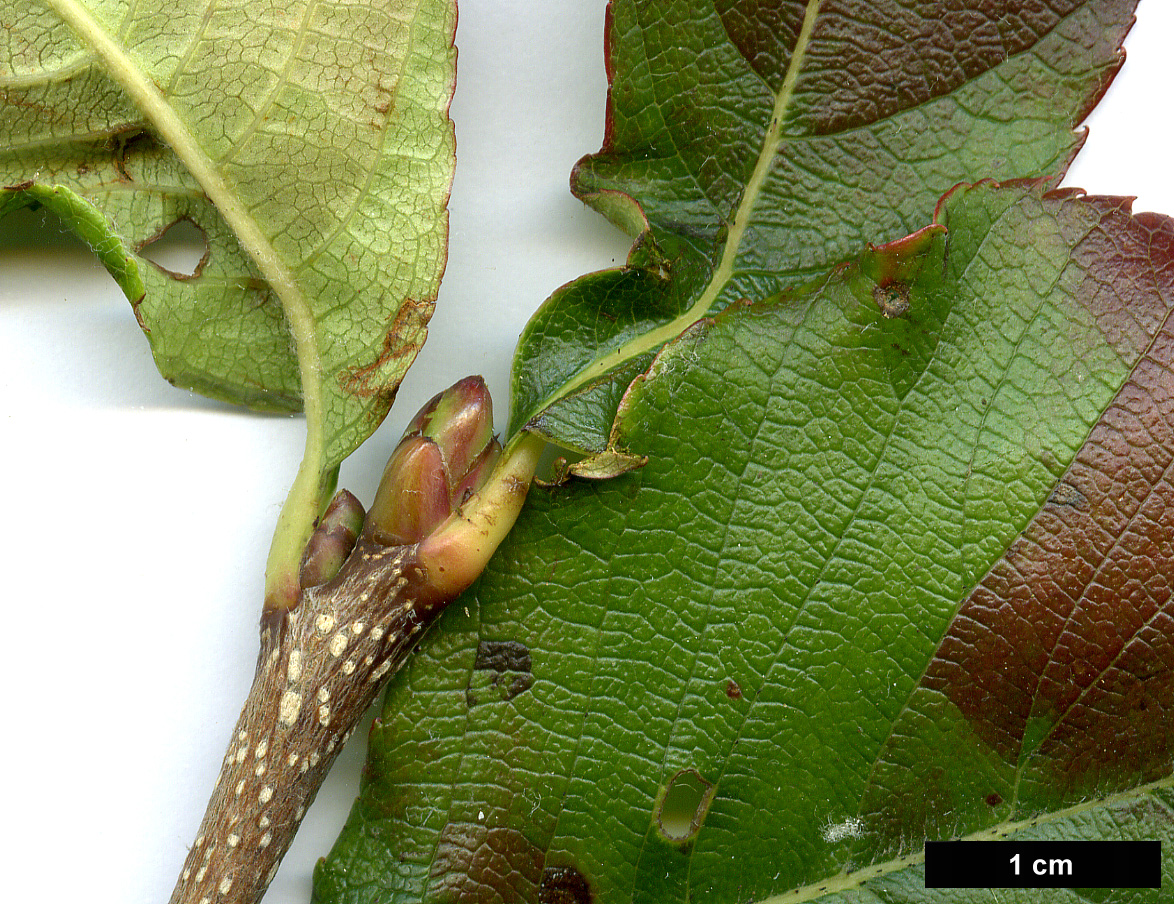Thomsonaria decaisneana
Credits
Article from Bean's Trees and Shrubs Hardy in the British Isles
Recommended citation
'Thomsonaria decaisneana' from the website Trees and Shrubs Online (treesandshrubsonline.
Genus
Synonyms
- Aria decaisneana Lavallée
- Aria keissleri (C.K.Schneid.) H.Ohashi & Iketani
- Hahnia aria var. majestica Dippel
- Micromeles keissleri Schneid.
- Micromeles decaisneana (Lavallée) C.K.Schneid.
- Micromeles decaisneana var. keissleri (C.K.Schneid.) C.K.Schneid.
- Micromeles keissleri C.K.Schneid.
- Pyrus aria var. majestica (Dippel) Asch. & Graebn.
- Pyrus decaisneana (Lavallée) G.Nicholson
- Pyrus keissleri (C.K.Schneid.) H.Lév.
- Sorbus aria var. decaisneana (Lavallée) Rehder
- Sorbus aria var. mairei H.Lév.
- Sorbus aria f. majestica (Dippel) Zabel
- Sorbus aria var. majestica (Dippel) C.K.Schneid.
- Sorbus keissleri (Schneid.) Rehd.
- Sorbus mairei (H.Lév.) Rehder & H.Lév.
Editorial Note
The text below is that of Bean (Bean 1981) who discussed this taxon under the name Sorbus keissleri. We have created this hybrid article – Bean’s text under the correct modern name, with appropriate synonymy – whilst we await sponsorship to enable a full revision of this genus to be written. We are re-organising the Sorbus sensu lato articles in this way to enable a new revision of Sorbus sensu stricto to commence in 2023, and to bring the nomenclature of this complex group of plants up to date in line with modern treatments.
TC, August 2023.
A deciduous tree up to 40 ft high; young shoots felted at first, the lenticels numerous and distinct. Leaves obovate to oval, pointed, tapered at the base, finely toothed, 21⁄2 to 5 in. long, 11⁄4 to 21⁄2 in. wide, of firm rather leathery texture, dark glossy green above, paler beneath, at first shaggy, afterwards quite glabrous on both surfaces, veins in seven to ten pairs; leaf-stalk 1⁄4 in. or less long. Flowers white, 3⁄8 in. wide, produced in rounded or pyramidal clusters 2 in. across at the end of short leafy twigs; stalks woolly; petals broadly oval; stamens twenty; styles two or three, united near the base. Fruits flattish orange-shaped, 1⁄2 to 3⁄4 in. wide, dull green, spotted with pale dots; the calyx falls away from the top and leaves a broad circular pit or scar there. Blooms in April.
Native of central, western and southwest China, northern Burma and southeast Tibet; introduced by Wilson in 1904 for Messrs Veitch from W. Szechwan, and reintroduced by Forrest from Yunnan in 1931. This fine species has become rare in gardens. It ‘… is one of the first of the Sorbus to open its buds, in mid-April. The glossy young leaves, of an unusual yellowish green in the early spring, retain as they mature a fresh green colour so that by mid-November the tree looks like an evergreen.’ (Fox MS). The plant in the Winkworth Arboretum, to which Dr Fox referred, attained a height of about 20 ft and bore fruits, but died in the late 1960s. The flowers are very fragrant, an unusual feature in this genus, but drop their petals after barely more than a day.
S. keissleri belongs to the section Micromeles, but is not closely related to any other cultivated member of that group.

